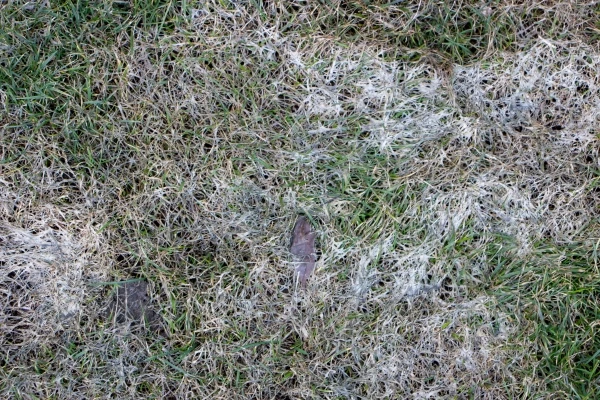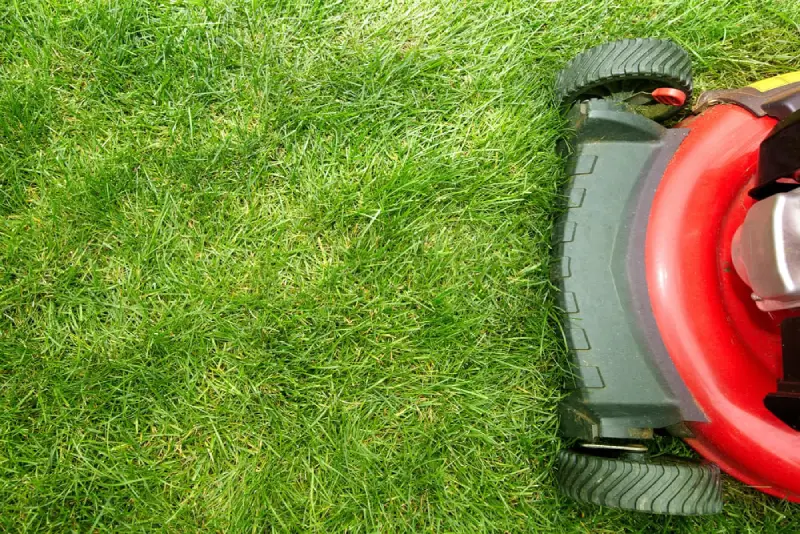How to Prevent Snow Mould on Grass

What is snow mould? More importantly, what can you do to prevent it from attacking your lawn? Snow mould prevention requires year-round focus. Timing and consistency are critical. In this article, we’ll tell you all about snow mould on grass and guide you through the prevention process.
Table of Contents:
What Is Snow Mould?
Snow mould is a cold-weather fungus that usually affects cool-season grasses in colder climates. There are two primary types of snow mould: pink snow mould and grey snow mould. Both pink and gray snow mould can harm your lawn by killing your grass blades. Below are images to help you identify the differences.
Pink Snow Mould
.webp)
Pink mould is more potent and can kill grass all the way down to the roots.
Grey Snow Mould
.webp)
Grey snow mould is less severe, and your grass may be able to grow back after an infestation.
However, snow mould affects more than your lawn’s health. Many people suffer from snow mould allergies and can have an allergic reaction to the spores it contains. Even pets can be allergic to snow mould, which will put a damper on their fun in the snow.
What makes snow mould difficult to deal with is that the effects don’t show up until spring, when the snow melts.
Snow Mould Signs and Symptoms
Snow mould appears in the wake of a snow melt. As ice and snow melt away in the spring, you may notice white, grey, pink, or hay-coloured patches left behind on your lawn. These patches may look like leftover snow, but they are major signs of snow mould on grass. The patches are often matted or crusty and can be several metres in diameter.
You can typically determine what type of snow mould you have from the signs of disease on your lawn. Greyish-white patches indicate grey snow mould, while whitish-pink patches signal pink snow mould.
What Causes Snow Mould on Grass?
The fungal spores that cause snow mould can live in your soil throughout the year, but they’ll remain inactive until the conditions are favourable for growth. What are these favourable conditions? The first ingredient snow mould fungal spores need is lots of moisture. The second is soil temperatures between 0 and 7 degrees Celsius.
This is why snow mould is so common after spring snow melts. The melting snow provides moisture while the soil warms to within the ideal temperature zone for the fungal spores.
How to Get Rid of Snow Mould
Unfortunately, once you have a case of snow mould on your lawn, it’s difficult to get rid of the fungal pest. Fungicides won’t work when the damage is already done. The best thing you can do is get rid of any remaining snow piles and rake matted grass to help dry out your lawn.
Many lawns can recover from grey snow mould, but you may need to reseed or resod if you get a bad case of pink snow mould.
Since it proves difficult to get rid of snow mould, the key is snow mould prevention.
Snow Mould Prevention
Snow mould prevention starts during the spring months, right after the last snow has melted. Your first goal in preventing snow mould is to make sure that moisture has a safe place to drain and doesn’t start pooling on your lawn. Here are some things you should do during the spring, fall, and winter months to prevent snow mould.
Regularly Dethatch
.webp)
Regularly dethatch your lawn throughout the year. Thatch is dead soil and grass that builds up directly below the grassy layer of your lawn. Getting rid of thatch allows new, richer soil to provide the necessary nutrients for your lawn, which is crucial for the growth of healthy grass and preventing snow mould.
Ensure Proper Drainage
.webp)
One of the best ways to prevent snow mould is to ensure melting snow and other moisture has a place to properly drain. If your soil doesn’t have proper drainage, moisture will accumulate and sit on your lawn. This abundance of moisture creates an ideal environment for snow mould to develop. Check throughout the winter to ensure melting snow properly drains.
Clear Leaves, Clippings, Debris Piles
.webp)
Keeping your lawn clean and tidy not only helps it maintain a neat, well-manicured appearance, but also helps it to prevent snow mould. If leaves, debris piles, clippings, and other obstacles are left to accumulate on your lawn, they can prevent moisture from draining. This buildup of moisture can be a lawn killer.
Apply a Fungicide
Applying a fungicide is key to your pre-winter lawn prep. Choose a heavy-duty fungicide that can stand up to the cold Canadian winters. Make sure to select one that will work well on your type of grass.
Cut the Lawn Just Before the First Snow

Since many grasses slow their growth during the colder months of the year, ensure your lawn is a good length heading into winter. Since longer grass retains moisture and prevents drainage, a final shorter mow will help it reach the desired height during the winter. Ideally, your grass should be 5 to 6 cm by winter to ensure a healthy lawn in the spring.
Don’t Fertilize Before the First Snow
Although periodic fertilizing helps to maintain a healthy lawn, timing is everything. Fall is typically the best time to fertilize your lawn, but fertilizing in the winter or prior to the first snow of the season is not recommended. Stop fertilizing within six weeks of the first expected snowfall.
Eliminate Heavy Snow Piles
.webp)
If you live in an area that receives a decent amount of snow during the winter, you’ll clear snow from your driveway and walkways throughout the season. When you do this, avoid placing large piles of snow on your lawn. Large piles of snow that are left to melt on your lawn create excessive moisture that can lead to the development of snow mould.
Call in the Experts!
Are you having trouble with snow mould on grass? Call The Grounds Guys®!
Preventing snow mould is a year-round job, and not everyone has the time, tools, or patience to get it done. Fortunately, The Ground Guys are here to help! We offer a full range of services that will have your lawn and the rest of your property looking its absolute best throughout the year.
We have local teams throughout Canada that perform snow mould prevention services as well as snow shoveling and removal. Our teams are knowledgeable, reliable, and friendly. You can count on a job well done with The Grounds Guys. That’s our Neighbourly Done Right Promise™ to you. Contact us to learn about all our services.
We are happy to put together a free estimate based on your specific landscaping needs. Find your local The Grounds Guys team today.
 Click to call
Click to call


